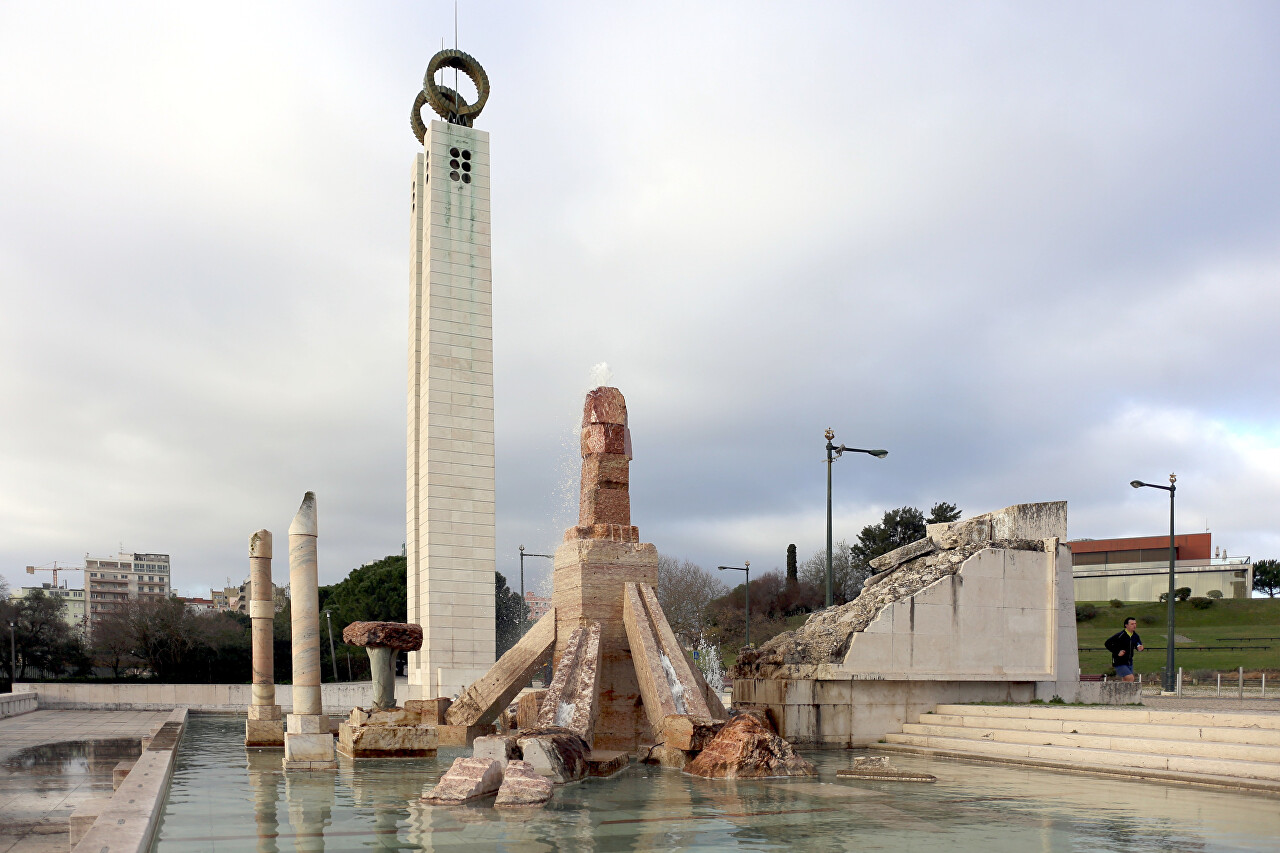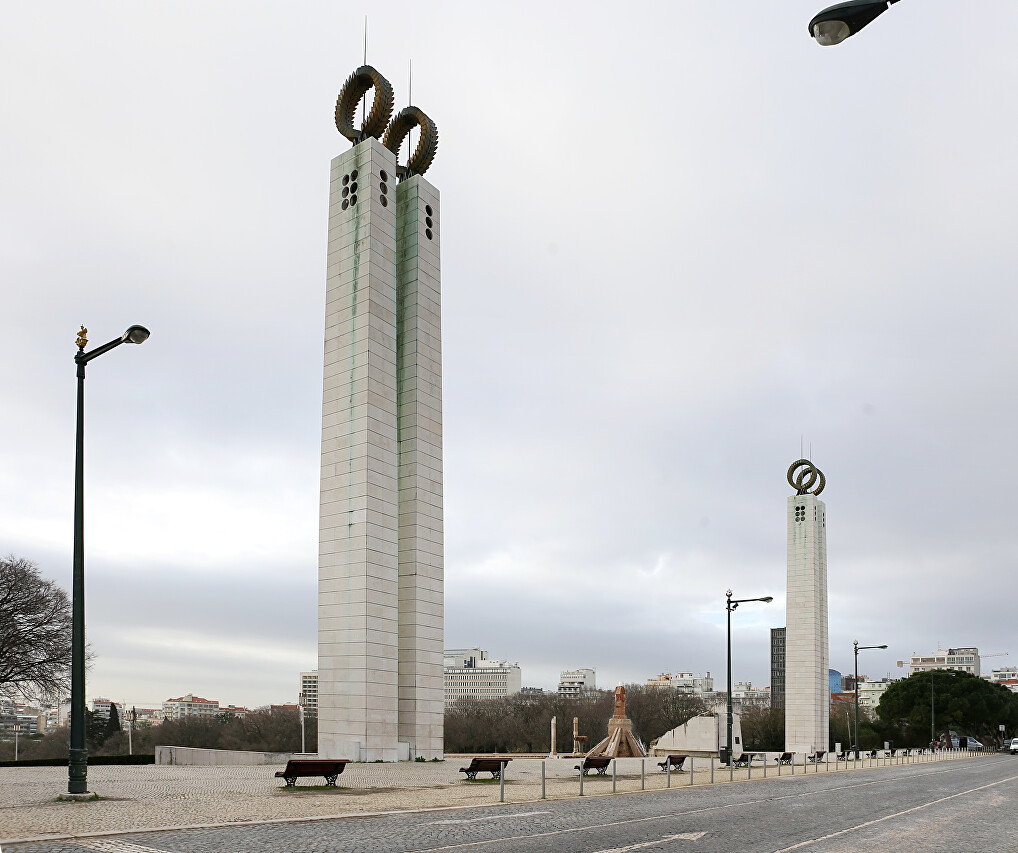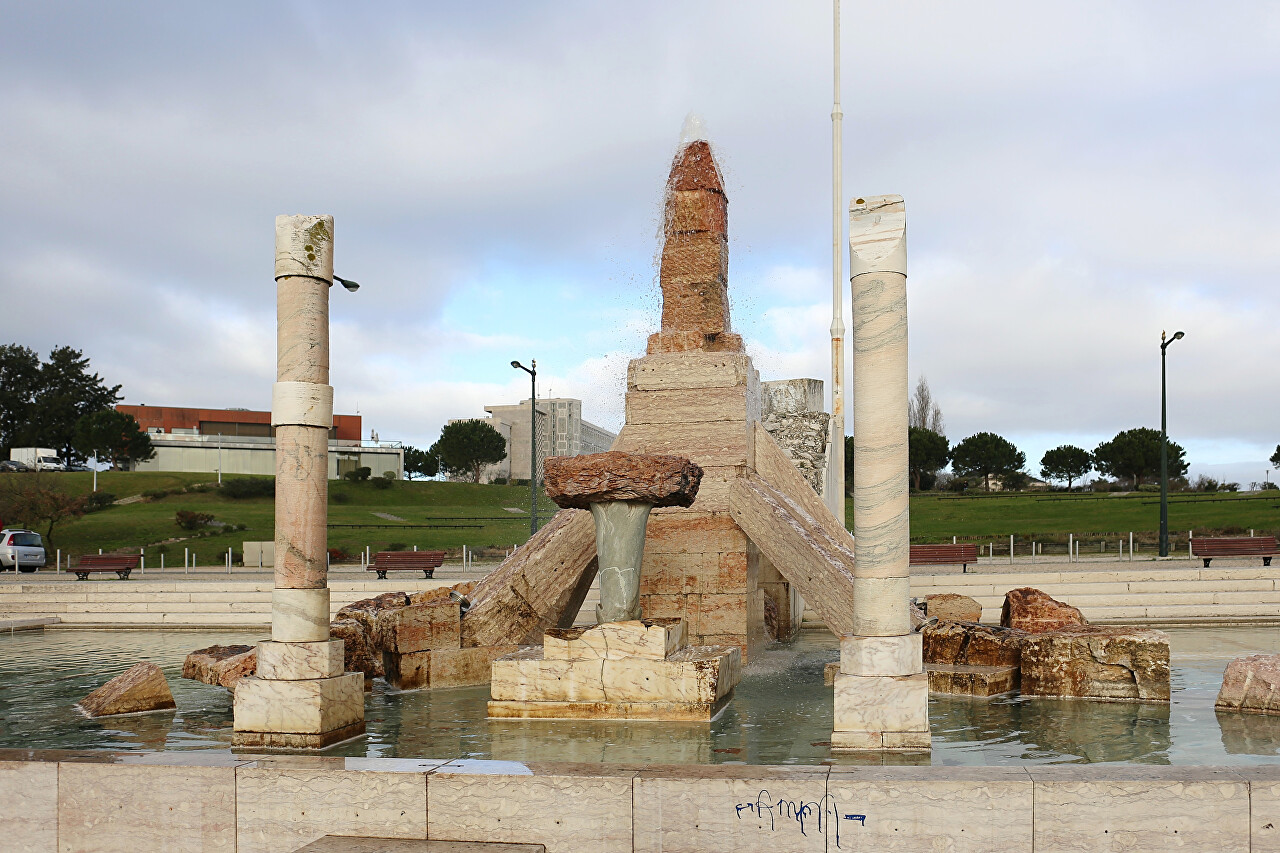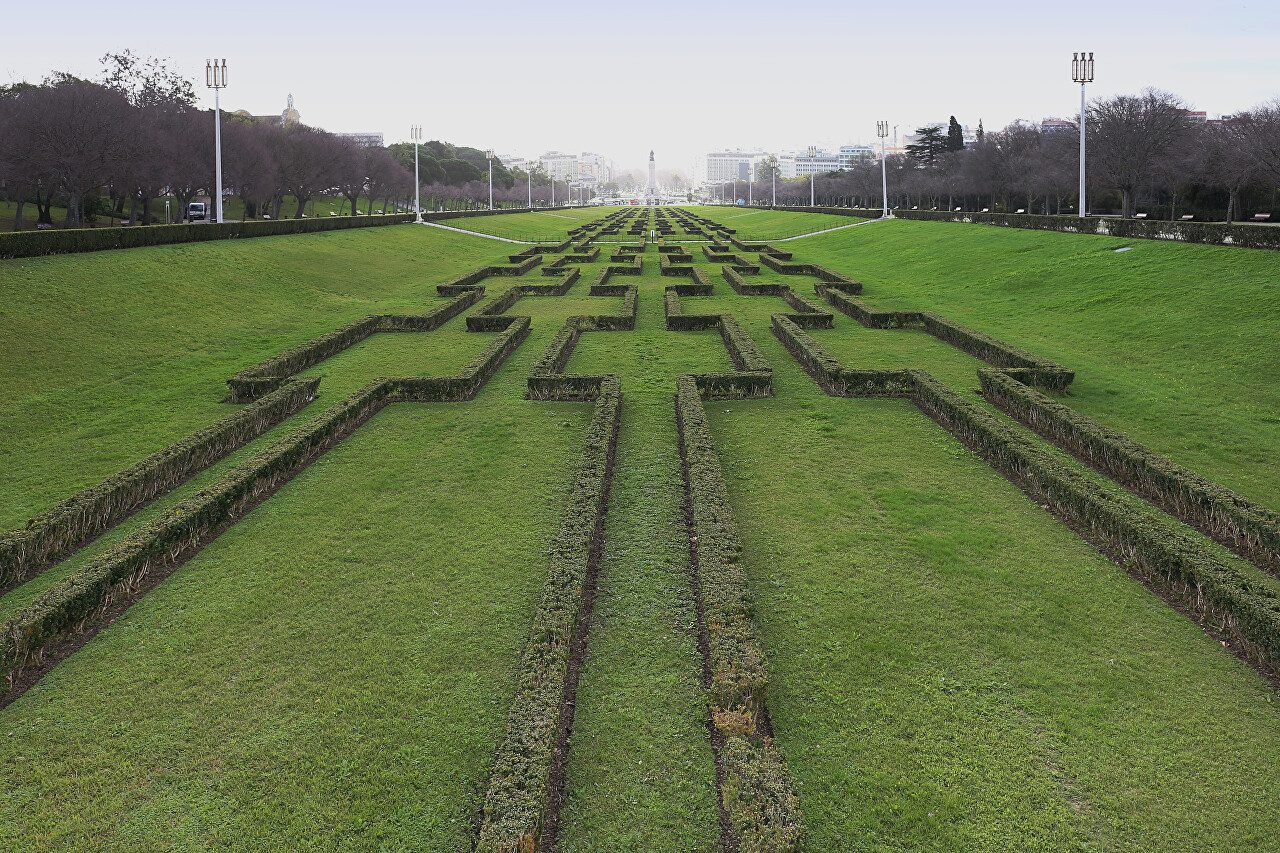Monumento ao 25 de Abril
At the top of the Eduard VII Park is a sculptural ensemble, opened on April 25, 1997, in preparation for the celebration of the 25th anniversary of the military coup known as the Carnation Revolution (Revolução dos Cravos). In the early seventies, Portugal was the poorest country in Europe, and the harsh reactionary regime of the "corporate state" and colonial wars brought the economy to a standstill. In 1973, army officers founded the secret society "Movement of Captains" (Movimento das Forças Armadas, MFA), with the aim of changing the political system.

On April 25, 1974, rebel-led army units seized government offices and announced the transfer of power to the National Salvation Council. To avoid civilian casualties, an appeal was broadcast on the radio asking residents not to leave their homes, but enthusiastic crowds soon filled the streets. The revolution was symbolized by the red carnations that soldiers put in their rifle barrels and clothing pockets, and April 25 became the most important Portuguese holiday.

The City Council of Lisbon commissioned the design of the monument to the famous sculptor João Cutileiro. The monument is made of a block of red marble weighing 90 tons, in front of it are two columns of white marble, and between them a figure of carnations made of gray and red marble. The monument is located in the center of the pool with water, where you can also see the partially destroyed pedestal of the monument Estado Novo (New State), established in the fifties, it also includes the double imperial columns at the edges of the pool, designed by Keil do Amaral. The monument was a symbol of the authoritarian regime established in Portugal in 1933 by Antonio Salazar.

The monument is crowned with a six-meter figure, the shape of which immediately suggests an association with the male reproductive organ. According to the artist, the phallic shape symbolizes the courage of the coup organizers, but this caused heated discussions during the approval of the project, but was still accepted as a symbol of a new political and cultural era.

In front of the monument is the popular Miradouro do Parque Eduardo VII observation deck, which offers a stunning view of the central part of Lisbon, which divides the Libertad Avenue into two halves.
